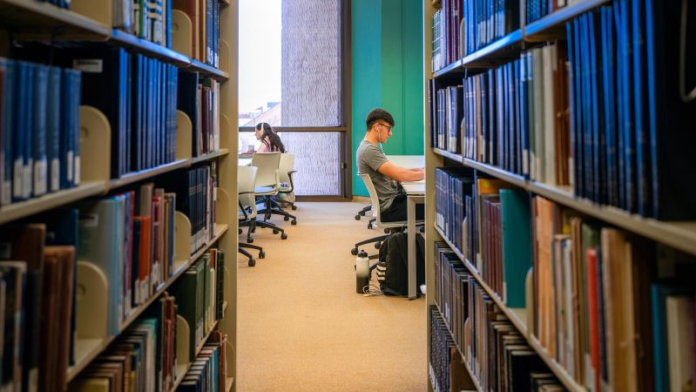Washington CNN —
Some Democratic lawmakers are pressuring the Biden administration to take further action on student loans before President-elect Donald Trump takes office, including finalizing some debt forgiveness it already approved.
Trump hasn’t made specific promises on student loans, but canceling debt isn’t a policy priority like it has been for President Joe Biden, who has approved the discharge of more student debt than any other president despite a major blow by the Supreme Court decision to strike down his key proposal last year.
Many Republicans have slammed Biden’s efforts to provide broad student debt relief as unfair, shifting the cost to taxpayers who decided not to go to college or have already paid for their education.
Much of the debt relief Biden ultimately approved was targeted to specific groups of borrowers and delivered via student loan forgiveness programs that predated his administration.
But there’s concern from Democrats that some borrowers, particularly those who were defrauded by their schools, are still waiting for the debt discharge that the Biden administration approved.
“These borrowers set out to pursue the American dream, but instead of earning a diploma that unlocked the doors of possibility, they found themselves being shackled with a worthless degree and the burden of student loan debt,” Sen. Ed Markey, a Democrat from Massachusetts, said at a press conference about student debt earlier this month.
During Trump’s first term, his administration slow-walked some student loan forgiveness for defrauded borrowers who were eligible for relief.
Dozens of Democrats are asking the Biden administration to take the following actions before Inauguration Day on January 20:
Officially deliver student loan forgiveness promised to defrauded borrowers
The Biden administration has approved nearly $29 billion of student loan forgiveness for about 1.6 million people who were defrauded by their schools, but many of them are still waiting to see their debts discharged from their accounts.
Since Biden took office, the Department of Education has approved several massive group discharges for borrowers who attended for-profit college networks – like Corinthian Colleges, the University of Phoenix and The Art Institutes – and it has taken longer than expected to process some of the debt relief.
About 135,600 former Corinthian students who were approved for debt relief were still waiting for their loans to be discharged as of this fall, according to a court filing.
Processing the discharges for the remaining borrowers has “proven more complicated” partly because they have consolidated loans, it said.
There could be more borrowers waiting for cancellations, as well as refunds for amounts previously paid. A group of more than 70 Democrats asked the department to “immediately process debt relief for these borrowers” in a letter sent in early December.
The relief was approved under the borrower defense to repayment program, which grants debt discharges for borrowers who were misled by their colleges.
Even if the discharges are not processed before the change in administration, lawyers expect that the Department of Education will still be required to do so.
Eileen Connor, president and director of the Project on Predatory Student Lending, which represents borrowers defrauded by their colleges, noted that the first Trump administration processed debt relief approved by the Obama administration.
That said, when then-Education Secretary Betsy DeVos approved the cancellations, she wrote she was doing so “with extreme displeasure.”
Approve more student loan forgiveness through borrower defense
Some lawmakers are urging the Department of Education to approve additional group discharges under borrower defense. They say there are other schools that have been found to have committed fraud or misled students, making some other former students eligible for relief under borrower defense.
There’s some concern that the incoming Trump administration could change the rules of borrower defense and slow down the processing of pending claims.
President Joe Biden speaks about student loan debt relief at Madison Area Technical College in Madison, Wisconsin, on April 8. Andrew Caballero-Reynolds/AFP/Getty Images/File
“If they have their way, it will be significantly harder – and potentially impossible – for these borrowers to receive relief under the Trump-Vance Administration,” Rep. Bobby Scott, a Virginia Democrat and raking member on the House Education and Workforce Committee, wrote in a separate letter to the department last month.
Under the first Trump administration, the Department of Education also attempted to change the borrower defense rules to limit the relief that could be delivered through the program. The proposal was unsuccessful, but the department stopped processing borrower defense claims while fighting challenges in court. As a result, a backlog of more than 200,000 claims piled up.
Provide options for borrowers stuck in legal limbo
Democrats are also pushing the Department of Education to make it easier for about 8 million borrowers who are enrolled in a plan that’s currently on hold due to litigation to make payments and qualify for debt relief.
The plan, known as the SAVE (Saving on a Valuable Education), was launched by the Biden administration last year. But it’s being challenged in court by two groups of Republican-led states that argue the president does not have the authority to implement the plan. A ruling by the 8th US Circuit Court of Appeals is expected imminently.
Borrowers enrolled in SAVE are not currently required to make payments since the Department of Education put them in an interest-free forbearance due to the litigation.
While the pause on payments is good news for many of the impacted borrowers, it could potentially delay student loan forgiveness for some of them.
That’s because the time in forbearance will not count toward the number of payments required to be eligible for debt relief under programs like Public Service Loan Forgiveness, which wipes away remaining debt for eligible public-sector workers — like teachers and nurses — after they make 120 qualifying payments.
As of last week, the Department of Education said that borrowers were allowed to switch into two older repayment plans – Pay As You Earn, or PAYE, and Income-Contingent Repayment, or ICR – in order to resume making payments that count toward debt relief.
Scott also urged the department to process any PSLF discharges for borrowers who may have recently reached 120 qualifying payments.




